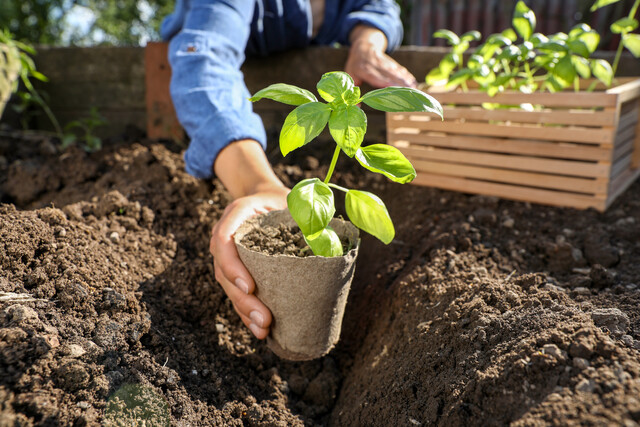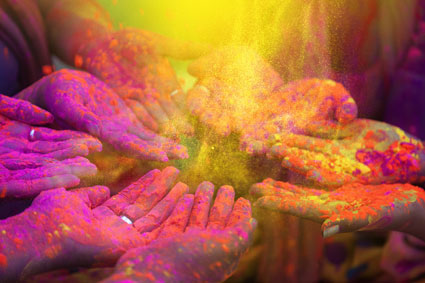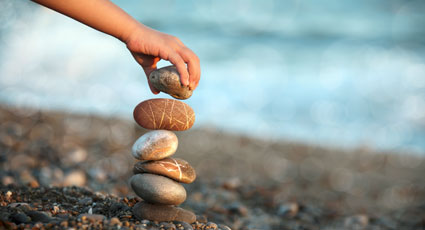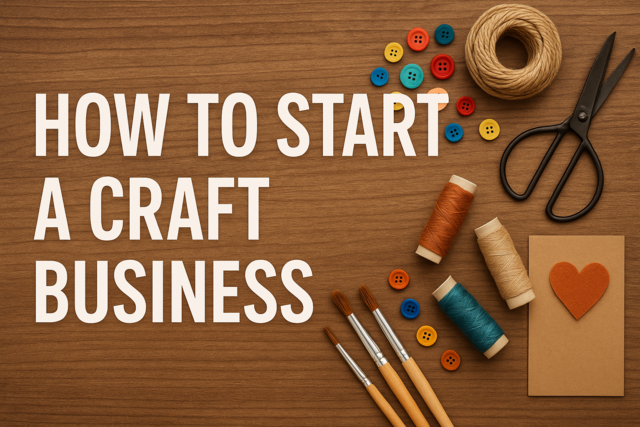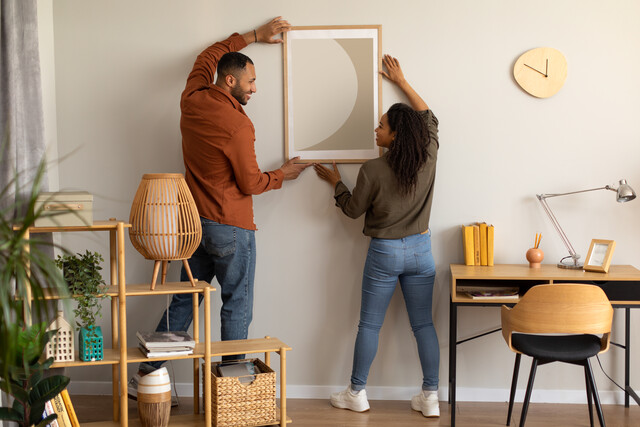- Mixers - Different recipes will call for different kinds of mixers. There are large, stand-up heavy-duty mixers (ideal for recipes that require extensive mixing times), or smaller, portable hand-held electric mixers (ideal for quick mixing and/or smaller quantities.)
- Mixing bowls - We recommend that you invest in a graduated set of stainless steel bowls. Not only can they be heated and cooled, they also don't break and can be quickly and easily cleaned up. An added bonus? You can use the extra-large variety for sifting dry ingredients. Other uses? As a double boiler.
- Double boilers - If you can find one (and you have the money to spare), double boilers are a necessity. However, you can create your own makeshift version easily, and without busting your budget. Just set a large stainless steel bowl over a large pot of boiling water (paying attention to any instructions as to whether you should allow the pan to touch water or not.) These are great, because you'll be using gentle, indirect heat to melt or cook a given ingredient (instead of burning it.) Uses: for melting chocolate, heating whipped cream for sauces and fillings, or heating eggs for a Genoise cake.
- Pastry brushes - Opt for natural bristles, versus synthetic ones. They're more flexible and maneuverable, and they hold more liquid (making brushing syrups less frustrating.) Uses: greasing pans, brushing syrup onto layer cakes.
- Wax and parchment paper
- 8-inch, 9-inch, and 10-inch round cake pans
- Spring-form cake pans
- Jellyroll pans
- Cooling racks
- A candy thermometer
- Cake boards - They give your cake a more professional appearance and can be found in most baking supply stores. Remember to choose boards that are at least an inch larger than your cake pans.
- Long serrated knife (at least 12 to 14 inches long, 1 inch wide and 1/8 inch thick) - This is needed to help split cakes into layers, to decorate the tops of frosted cakes, as well as to help lift cakes and other deserts off of your revolving cake stand.
- Revolving cake stand - This single tool will significantly simplify the decoration stage. You can find plastic or metal models. Opt for one with a heavy-based stand, for balance and support, and a removable turntable disk. (Substitutions: plastic, metal, wooden, or marble Lazy Susans)
- Spatulas (straight and angled) - Don't confuse these with rubber scrapers. This type more resembles a butter knife than a spatula. The angled variety is great for spreading and applying frosting.
- Rubber scrapers - These are good for getting all of your mixes from your pots, pans, and bowls.
- Drywall/Construction spatulas - You'll find these at a hardware store, not a baking supply chain. Created for drywall and cement, they also work well for frosting cakes and making fancy chocolate decorations on marble slabs.
- Plastic bottles - These are like the kind restaurants use for ketchup, mustard, and barbecue sauce. You can use them to apply syrup, thinned jellies, and sauces.
- Pastry triangle comb - it's about 3" in size with troweled teeth of various sizes and depths around the perimeter. Ideal for a clean, perfect, decorative flair for your icing.
- Pastry bag and tips - These are for piping decorative designs and shapes, such as stars, swirls, tubes, rosettes, and other decorations onto your cake.
- Sieves (small, medium, and large) - These are for sifting, mixing and straining mixtures.
- Zester
- Grater
- Cake boxes
- Various cake and candy molds
- What is the theme of this cake? Is it a wedding cake? A birthday cake? A kid's cake?
- What flavors will you use? What colors?
- What kind of finish are you looking for (buttercream vs. fondant)?
- How many people will the cake need to feed?
- Are there any dietary restrictions that you need to keep in mind (for instance, will you need to substitute Splenda , for sugar, or omit nuts from the recipe)?
Only after you've done all of these things will you be ready to get started baking that cake!
From the time we received our first miniature kitchen set, complete with an oven and a light bulb that actually worked, the desire to fire up that light bulb and turn out beautifully decorated cakes and cupcakes was a dream. Now that you're all grown up, cake baking and decorating can become reality.
Did you know cake decorating is not only an art, but a great hobby to relieve stress and show off your creativity? I didn't say it was easy. There are a lot of nuts and bolts involved in baking a cake, and even more in decorating it. If you have never constructed an elaborate cake before and you are a newbie, elaborate may mean white butter cream frosting and colored piping, with an attempt at a couple of simple piped flowers. Bravo!
As with any work, the right tools are necessary to get the job done. This means getting a sense of the tools and the ingredients, and practicing with them before using them on the cake itself.
As with anything, organization is extremely important. It makes a big difference if you start the decorating process with tools, colors, and other components prepared in advance.
The two most popular cake icings are sugarpaste and royal icing (better known as butter cream icing). Each of these icings requires working with different tools. Sugarpaste is rolled fondant or ready-to-roll icing. It's a popular trend by professional cake decorators to use marzipan and fondant in celebratory cakes. It's a good idea to practice on royal icing cakes before attempting a sugarpaste cake. Here is a list of tools you will need for a butter cream/royal icing cake:
1. Crank-handled, rounded-ended palette knife. This is a primary tool for icing a cake.
2. Metal icing rule - to keep icing at a uniform thickness
3. Metal side-scraper - for applying icing on sides of cake
4. Turntable - a tilting turntable is more useful than a fixed one, and is worth the extra cost.
5. Piping bags - to make borders and decorations
It's useful to have a selection of piping tubes or nozzles, a large flat dusting brush, a small, sharp knife, and several damp cloths. The Internet offers kits that contain many of the tools necessary for butter cream and royal icing cakes. The tool list for a sugarpaste cake is more extensive; however, you can always edit it down to the basics. You won't need all the tools until you are icing with fondant or marzipan.
1. Sugar Shaker - for sugar dusting decorations
2. Pastry Brushes and Paint Brushes - for brushing on jam and water, removing crumbs or icing sugar out of tricky corners and applying liquid colors
3. Marzipan spacers - to keep your marzipan the same shape as the cake, and correct thickness
4. Marble Rolling Pin - plastic may not be heavy enough to roll out fondant, wooden is not recommended and marble is hard, heavy and cold - perfect for rolling
5. Plastic Rolling Mats - great for rolling out icing, and can easily be peeled away from fondants
6. Paste Colors - Purchase from a sugar craft specialty shop. Never use substitutes for coloring icing.
7. Smoother Tool - for smoothing flat and sides of cake
8. Small, Sharp Knife - for cutting and marbling sugar icing
9. Large, Flat Dusting Brush - for confectioner's sugar
10. Crimpers - for crimping designs around the bottom of the cake
11. Sugar Glue and Paintbrush - to keep flowers and other decorations in place
12. Circle Cutters - for adding frills to the side of the cake
13. Posy Picks - to add dabs of color to icing
14. Tilting Turntable - for positioning cake while icing
Kitchen Supplies
Cake Mover
Victorian Cake Pans
This unusual cake mover is a boon in the kitchen. If you are into Victorian heart shaped cake pans, the Internet offers up a great selection of all shapes and sizes of cake pans. Wilton cake pans and tools are the Waterford of baking but, good news, not as pricey as crystal. For the amateur cake decorator, simple items can make your cake decorating experience Zen-like.
Plastic cookie-cutters give you a variety of shapes and are frequently used in cake decorating to create everything from flowers, to angels. If you already have metal, that works; however, plastic doesn't rust.
As you gather up tools you'll need to begin cake decorating, don't forget an oven thermometer. Just because you set your oven to 350 degrees doesn't mean your oven will perform as such. Having your cake off to a good start is vital.
Your bakeware should provide the best surface to showcase your cake and decorating talents. Cake pans should have consistent service (like the little black blazer you count on) and last for years. Good quality pans will hold their shape: perfect circles, square corners and no bulging on sides or bottom. A classic material is aluminum. It's been time-tested and will not warp. Cooling racks or grids are essential to properly cool your cakes.
Character pans, such as a Christmas tree or snowman, usually come in aluminum. Another option is plastic. If you don't do a lot of character cakes, these work well and are half the price. It may help to know their batter capacity is usually one box of cake mix.
Again, since you're just starting out, don't purchase everything at once or break your budget. As you become more advanced in cake decorating, you can always add to your supplies.
Decorating Tips
There are more than 150 different decorating tips available in metal and plastic. You can either purchase a starter tip kit at a reasonable price or purchase them separately. It helps to ask a professional which of the starter cake-decorating tips they recommend. Metal tips have a tendency to bend out of shape, whereas plastic holds its own. Whatever you decide, keep your tips organized in a handy case. A fishing tackle box is great for decorating supplies.
Tip couplers are necessary for ease of changing decorator tips on the same icing bag. The tip coupler base goes inside the bag prior to filling with icing. It locks into place to hold everything in place. You may need to practice using the coupler. After a couple of times, you'll be a pro. Because you'll want as much strength, control and reinforcement for your cake-piping job, skimping on tools for piping bags is not a good idea.
Designing Your Work Space
Cake Decorating Workspace
The most important priority when setting up for cake decorating is your workspace. The key is to have your area arranged with all the supplies and equipment easily accessible. You don't have to redesign your kitchen or pantry. A small table and a little cupboard space is really all you need. The cake decorating space in the photo is a work in progress, but it gives you a space profile. You may need to give your coffee maker a new home for a few days, if it makes the job easier. If you can manage it, a shelf or two would eliminate much of the clutter. Being messy doesn't make your cake taste or look better.
In some ways, a larger workspace presents the temptation to let your used bowls and tools lie around. Clean up as you work. Keeping your supplies in order can be beneficial for locating tools, coloring, etc. Whisk off used tools you no longer need to make room for the next step. In fact, be prepared for a surprising number of clean-ups after:
- Cake batters are mixed and in the oven
- Removing cake from pans
- Whipping up the icing
- Each phase of decoration
Keep a clean sponge and a stack of clean towels handy. No matter where you're working, a clear, clean space is essential. Before you start your decorating, make a decoration and equipment list to assure you have all the tools and supplies required. Many professional cake decorators use pre-printed checklists for large jobs. Check the recipe to assure you have enough flour, sugar, butter and eggs for cake and icing. Measuring tools, bowls, timers, plastic wrap, and a serrated knife are additional basics you will need.
Keep your workspace immaculate and germ free. All that lovely sweetness can draw ants, and insects that buzz in the air, and you want a sanitary outcome for your cake. Clean new cake boards with isopropyl alcohol, available in pharmacies and grocery stores. If you don't have that on hand, a paper towel splashed with vodka or gin on a paper towel and wiped thoroughly on the board will work as well. This removes dust and prevents bacteria that cause mold to grow between the cake and board. The same treatment should be applied to cake turntables.
Your tools are how you practice your trade or craft, so take good care of them. Wipe them dry after washing. Metal piping bag tips require extra care when drying. Plastic tips work just as well without the hassle.
Think about where you want your work space and the tools you will need -- then get started cake decorating.











